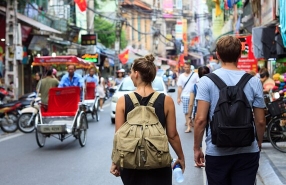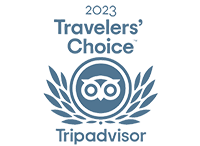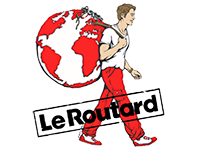How To Get Around In Ho Chi Minh City? Hop On & Hop Off In Saigon

Have you ever wondered how to get around Ho Chi Minh City? Ho Chi Minh City, also known as Saigon by its locals, is a vibrant metropolis. Fortunately, there are numerous transportation options to suit all needs and budgets. Here's a comprehensive guide to help you better understand hop-on hop-off in Saigon. Refer to this article about the Vietnam travel agency Autour Asia to plan a trip to this city.
Table of Contents
I. How to get to Ho Chi Minh City?
1. By plane
Going by plane is the fastest and most convenient way to get to Ho Chi Minh City. The city is served by Tan Son Nhat International Airport (SGN), located just 8 km from the city center. It's advisable to book flights in advance, especially during holidays (Tet and summer vacation), as ticket prices can rise rapidly.
Flying remains the fastest, most comfortable, and most reliable way to get to Ho Chi Minh City, especially if you're traveling with luggage or family.
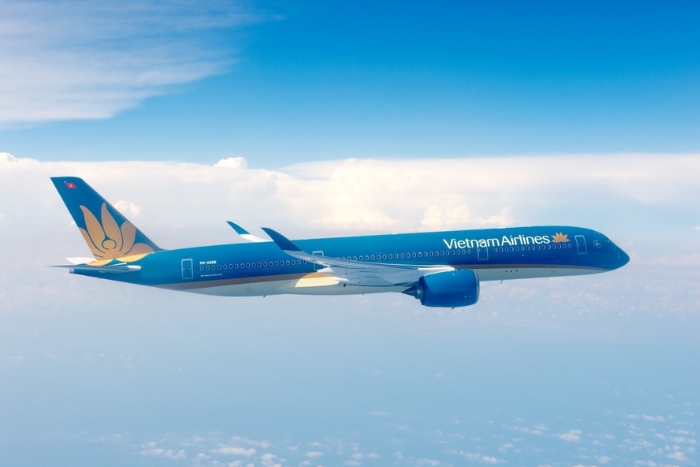
2. By train
The train is a choice for travelers to get around Ho Chi Minh City, especially those traveling from central Vietnam. It offers a variety of seating options, from single seats to air-conditioned sleeper cabins, ideal for longer journeys.
Visitors on the train can enjoy views of the rice paddies, mountains, sea, and rural life. Although slower than flying, it's a more economical option for adventurers, families, or travelers with more time.
You can book your tickets online on the official Vietnam Railways website (dsvn.vn) or purchase them directly at the station.

3. By car with a private driver
If you prefer to travel by road, it's possible to get around Ho Chi Minh City by car with a driver, particularly from neighboring southern regions such as the Mekong Delta, Vung Tau, Da Lat, or Nha Trang.
This is an ideal option for families, business travelers, or groups who want to travel at their own pace, with flexible stops.
Another popular option for hop on hop off Saigon is the interprovincial bus, which is both economical and well-organized. Companies you can consider include Futa Bus Lines (Phuong Trang), Mai Linh Express, or The Sinh Tourist, which offer regular services from many cities in central and southern Vietnam.
The service is generally very comfortable, with reclining seats, Wi-Fi, and air conditioning. You can choose to depart during the day or night, depending on your preference.
II. How to hop on hop off Ho Chi Minh City?
1. Public transport
Ho Chi Minh City's bus network is extensive and serves all areas, from the city center to the outskirts. It's the most economical means of transportation, with an average fare of 7,000 VND (about 0.27$).
With hot morning temperatures and sudden afternoon rains, as in Ho Chi Minh City, the bus is a wise choice, as it's air-conditioned and relatively punctual. For tourists, apps like BusMap or Moovit make it easier to plan trips, indicating stops and times.
However, foreign tourists should note: bus staff rarely speak English, and stops are not always clearly marked. However, for long or short trips, it's a good option.
Ho Chi Minh City is currently operating the Ben Thanh - Suoi Tien metro line. Tourists wishing to visit this area can download the HCMC Metro app to view the route and purchase tickets.
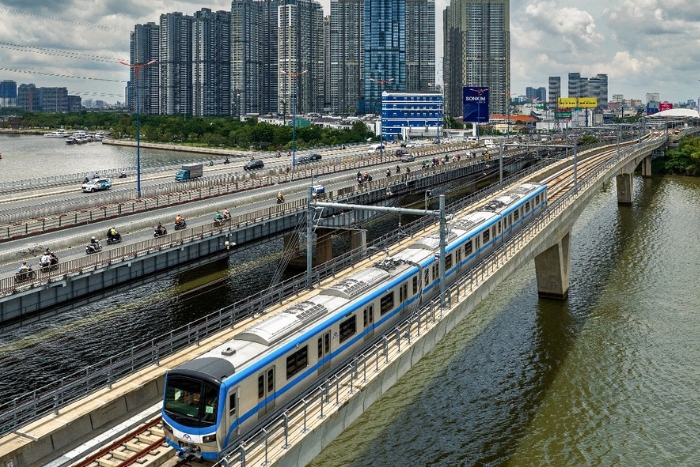
2. Individual motorized transport
In Saigon, motorbikes are the most popular means of transportation. For greater convenience, you can opt for a traditional motorbike taxi. These drivers usually wait on street corners, but it's advisable to negotiate the price before getting in. Ride-hailing apps like Grab, Gojek, or Be are also popular. They allow you to book a motorbike or car in seconds, with the price displayed upfront. Payment can be made in cash or by card, and the apps are available in English. These services are ideal for getting around Ho Chi Minh City easily, whether it's a short trip or a transfer to the airport.
3. Ecological and alternative means
Although cycling is not yet popular in Saigon, some neighborhoods like Thao Dien (District 2) or Phu My Hung (District 7) offer a quieter environment that's more conducive to this mode of transportation. Renting a bike can be a good idea for short trips or exploring the surrounding area.
For those who enjoy walking, you can stroll through tourist centers like District 1 (especially around Dong Khoi Street or Bui Vien). However, you must be very careful when crossing the street, as pedestrian crossings are not always respected. In addition, the tropical heat can make long walks tiring, especially in the middle of the day.
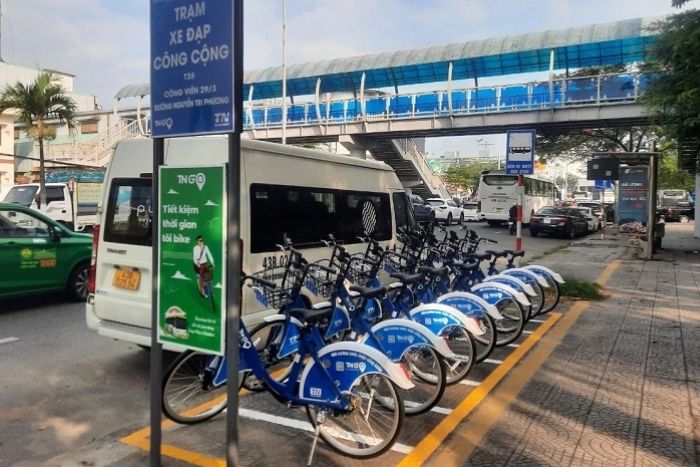
4. Vehicle rental
Some foreign tourists prefer to rent a car to get around Ho Chi Minh City. Prices range from 100,000 to 200,000 VND per day (€3 to €6), depending on the type of vehicle. However, traffic in Saigon is very dense and sometimes chaotic; a good sense of balance and caution are essential. Furthermore, a driver's license is required to drive; I do not recommend this option.
III. Some tips for hop-on-hop-off in Saigon?
- Have a local SIM card: To make your travels easier, it is recommended to have a local SIM card, available at a low price at the airport or in convenience stores. This will allow you to use transport and navigation apps without any hassle.
- Avoid rush hour (7am-9am / 5pm-7pm): Avoid rush hour as much as possible, generally between 7am and 9am and between 5pm and 7pm, when traffic jams can paralyze certain arteries. If you must take a taxi or motorbike during these times, allow for a longer journey time.
- Stay alert in traffic (including pedestrians): Traffic in Ho Chi Minh City can seem chaotic to foreign visitors, especially pedestrians. Scooters are ubiquitous, sometimes even on sidewalks, and traffic lights are not always respected. It's essential to be vigilant when crossing the street, moving slowly and steadily so drivers can anticipate you. Avoid using your phone while walking and always look both ways when crossing the street.
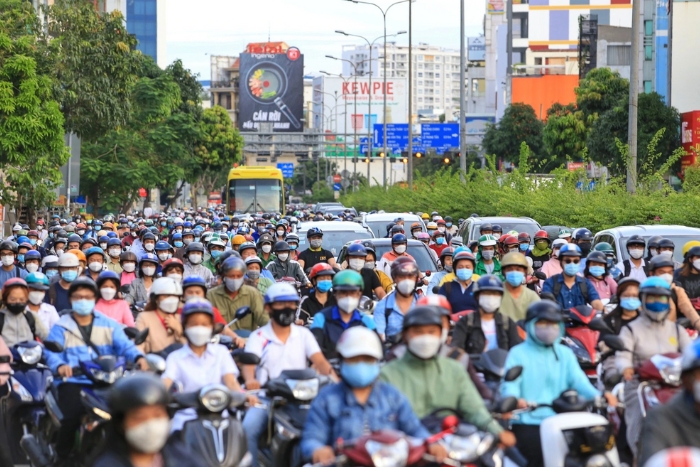
We hope you've learned more about getting around Ho Chi Minh City, hop on hop off Saigon. It might be a bit overwhelming at first, but with a little time, you'll quickly get the hang of it. Between public transportation like buses and the subway, and private vehicles like taxis or ride-hailing apps, you'll have plenty of options to get around easily. It's ideal for exploring this vibrant and historic city. Contact the Vietnam travel agency Autour Asia to plan your visit to Ho Chi Minh City with confidence and fully enjoy the city's vibrant energy and authentic charm.
Grab is the most widely used and reliable. It works like Uber, with motorcycle (GrabBike) and car (GrabCar) options. You can also try Be or XanhSM, which offer similar services. These apps allow you to view the fare before ordering, track the trip live, and rate the driver. They are available in English and are very useful for tourists.
In 3 days in Ho Chi Minh City, you can start by exploring the Reunification Palace and Notre Dame Cathedral. Continue your visit to Ben Thanh Market and the Cho Lon district for a cultural immersion. Don't miss the War Remnants Museum to better understand Vietnamese history. On days two and three, visit Ben Tre and Can Tho, two cities near Ho Chi Minh City, to discover the landscape and people of this peaceful river region in southern Vietnam.
Related travel guide
Other similar articles
CUSTOMIZABLE BY LOCAL EXPERTS
Personalized trip at the original price!
REFUND GUARANTEE
We believe in our work and promise to give you money back.
GOOD PRICE / QUALITY
95% satisfied more than expected!
24/7 LOCAL SUPPORT
We are always available online to provide assistance at any time.
Most read articles
Autour Asia is highly recommended on
Embracing the mission of "Satisfied more than expected" and providing authentic experiences, we have received numerous recommendations on reputable travel forums:












